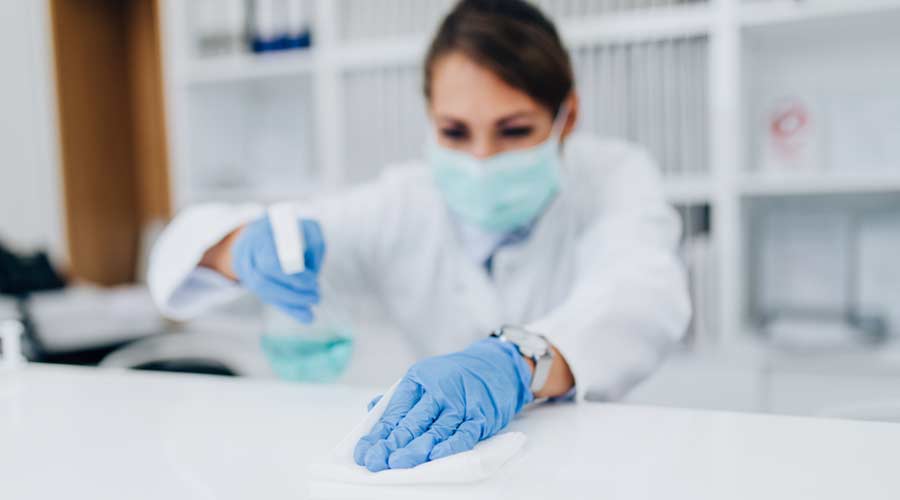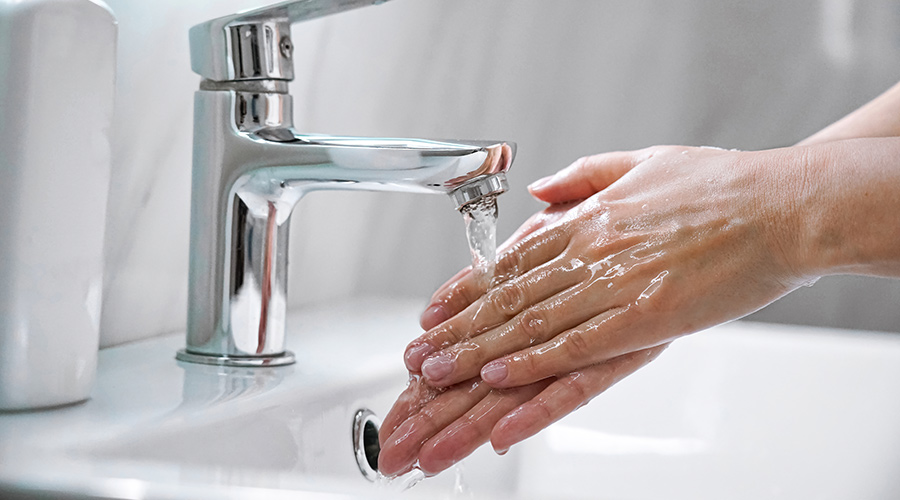Adequate disinfection of environmental surfaces, particularly high-touch surfaces, is a cornerstone for infection control and prevention in hospitals and other healthcare facilities. This task becomes even more important during a pandemic, such as the one we are all experiencing.
It is time for a reality check when it comes to disinfecting environmental surfaces. A huge gap remains between government registration protocols for disinfectants and the processing of an emergency department trauma room after a gunshot victim has received life-saving medical treatment. The disinfectant an environmental services technician (EST) uses to clean up blood, bone and human tissue was purchased with input from the infection prevention department, but unfortunately, many such disinfectants are either ineffective for the purpose or are not used properly. Why? There could be several reasons:
1. The registration process for healthcare-grade disinfectants is based on flawed methods for microbicidal activity. While materials managers and infection preventionists purchase and use only government-registered products, the registration process for environmental surface disinfectants is often based on flawed methods for microbial activity.
2. Spectrum of microbial activity. Frequently, a chemical disinfectant is tested against Gram-positive and Gram-negative bacteria only, but the label claims “broad spectrum activity.” According to Dr. Syed A Sattar, “The use of this antibiotic-relevant term is totally inappropriate for disinfectants. The correct use of the term must be given a disinfectant’s ability to inactivate not only vegetative bacteria but viruses and fungi as well, which are common nosocomial pathogens. Therefore, the registration number on the product label itself is of limited value.”
3. Inappropriate surrogates and test organisms. In my view, the common practice of allowing long lists of organisms on product labels has no justification in science. Many listed organisms are relatively fragile outside hosts and, thus, not known to spread through environmental means. Therefore, the listing of such pathogens clearly contributes to the fear factor.
4. Disinfectants are tested without wiping action. Even though most surfaces are disinfected with wiping, testing and label claims of products used for the purpose rarely entail wiping action. This omission is serious. When the EST is processing the aftermath in the trauma room, the gurney isn’t submerged in disinfectant for 10 minutes as the label states for contact time, although that is how the product testing is performed. In the real world, an EST employs a microfiber wiper, a disinfectant and elbow grease to process surfaces and equipment according to hospital protocols. The mechanical action of wiping contributes significantly to soil removal and rendering surfaces safe, clean and disinfected.
5. EST performance. Despite all the talk about in-service training and routine monitoring of ESTs, they remain a weak link in the infection control chain. Such individuals are often the least skilled and educated with limited proficiency and working knowledge. In addition, poor pay, job insecurity and lack of any tangible recognition of the crucial role they play contribute further to the high rate of turnover. The literature is replete with examples of ways a perfectly good disinfectant has been improperly diluted, stored, or applied by an EST. This issue is akin to having ill-trained and ill-equipped frontline soldiers in a major battle.
J. Darrel Hicks, BA, MESRE, CHESP, Certificate of Mastery in Infection Prevention, is the past president of the Healthcare Surfaces Institute. Hicks is nationally recognized as a subject matter expert in infection prevention and control as it relates to cleaning. He is the owner and principal of Safe, Clean and Disinfected. His enterprise specializes in B2B consulting, webinar presentations, seminars and facility consulting services related to cleaning and disinfection. He can be reached at darrel@darrelhicks.com, or learn more at www.darrelhicks.com.

 Why Cyber Readiness Is the New Standard of Care
Why Cyber Readiness Is the New Standard of Care Smarter, Faster, Safer: The Rise of AI in Healthcare Security Technologies
Smarter, Faster, Safer: The Rise of AI in Healthcare Security Technologies The WHO and UNICEF Release New Global Hand Hygiene Guidelines
The WHO and UNICEF Release New Global Hand Hygiene Guidelines Swatting Calls, Hoax Threats Have Real Consequences for Healthcare
Swatting Calls, Hoax Threats Have Real Consequences for Healthcare Next Level Announces Expansion of Conroe, Texas Clinic
Next Level Announces Expansion of Conroe, Texas Clinic